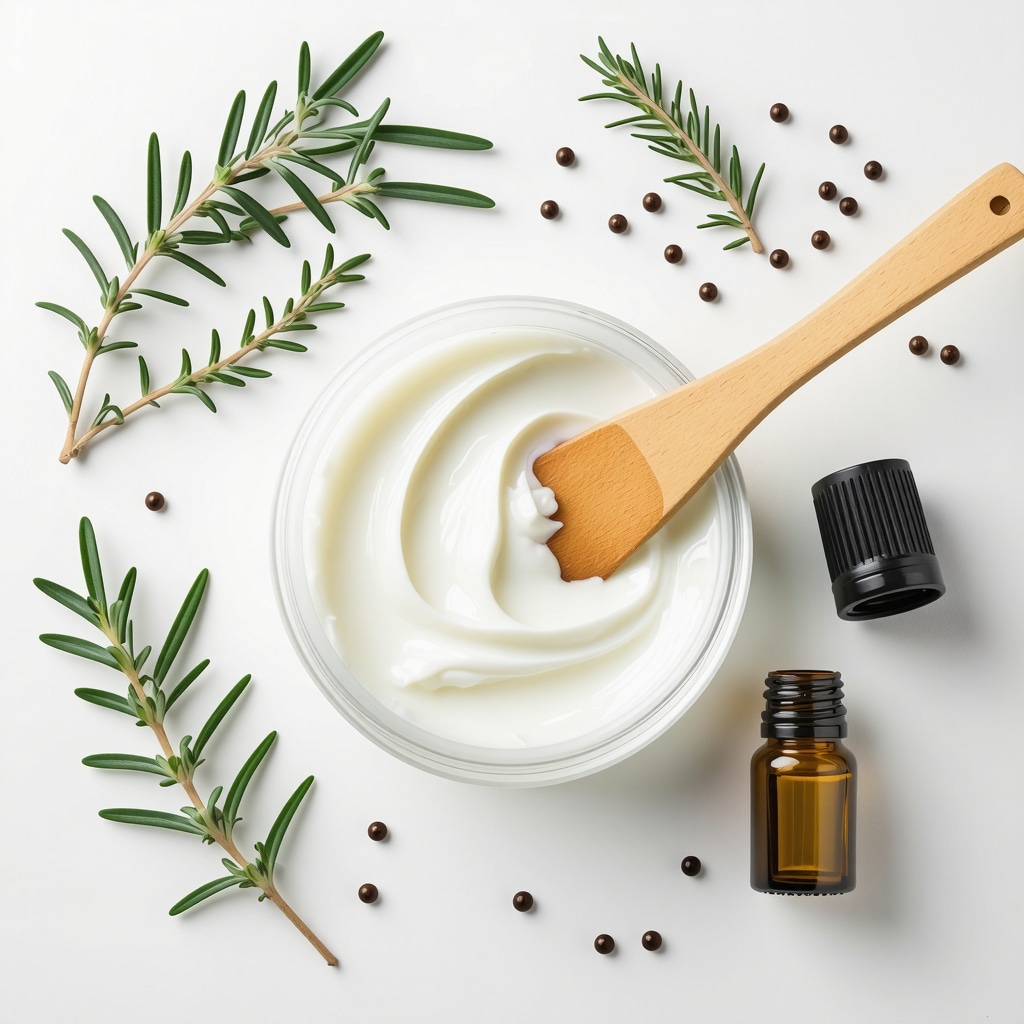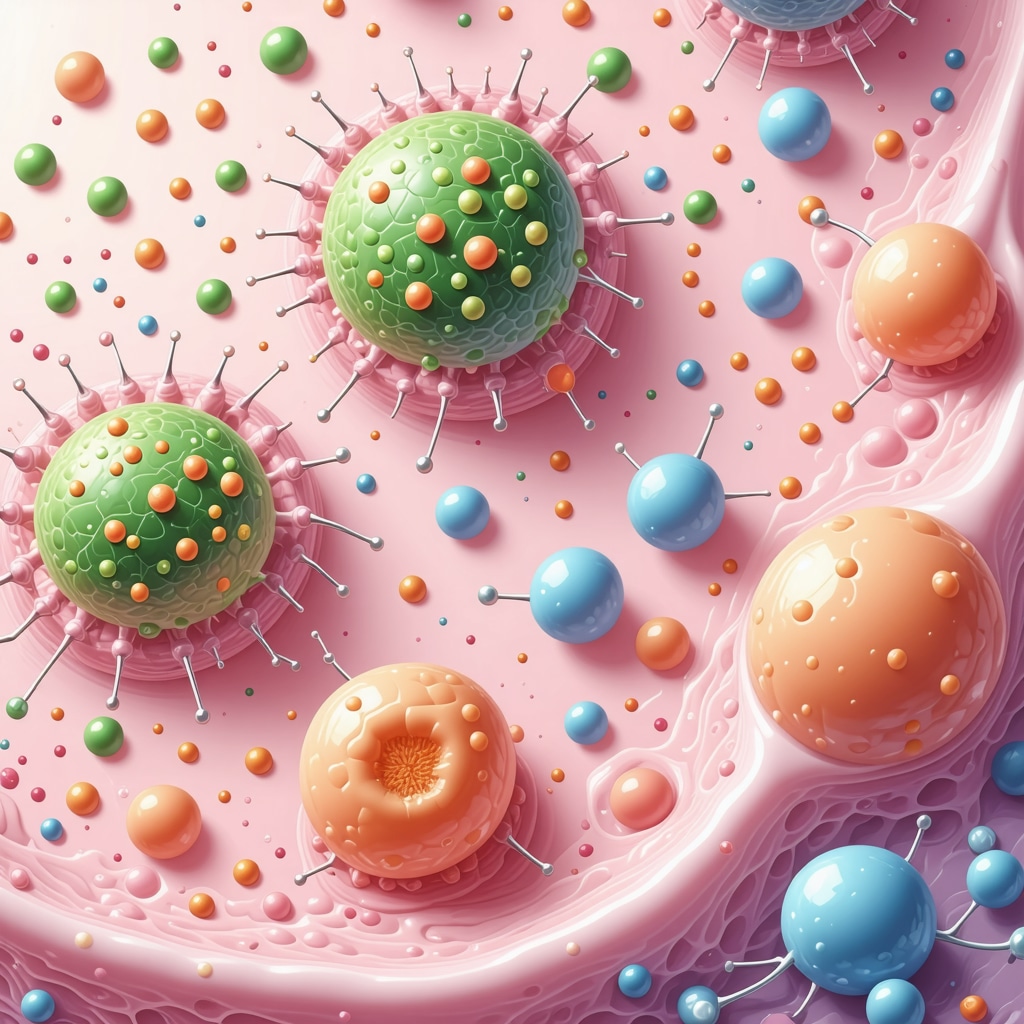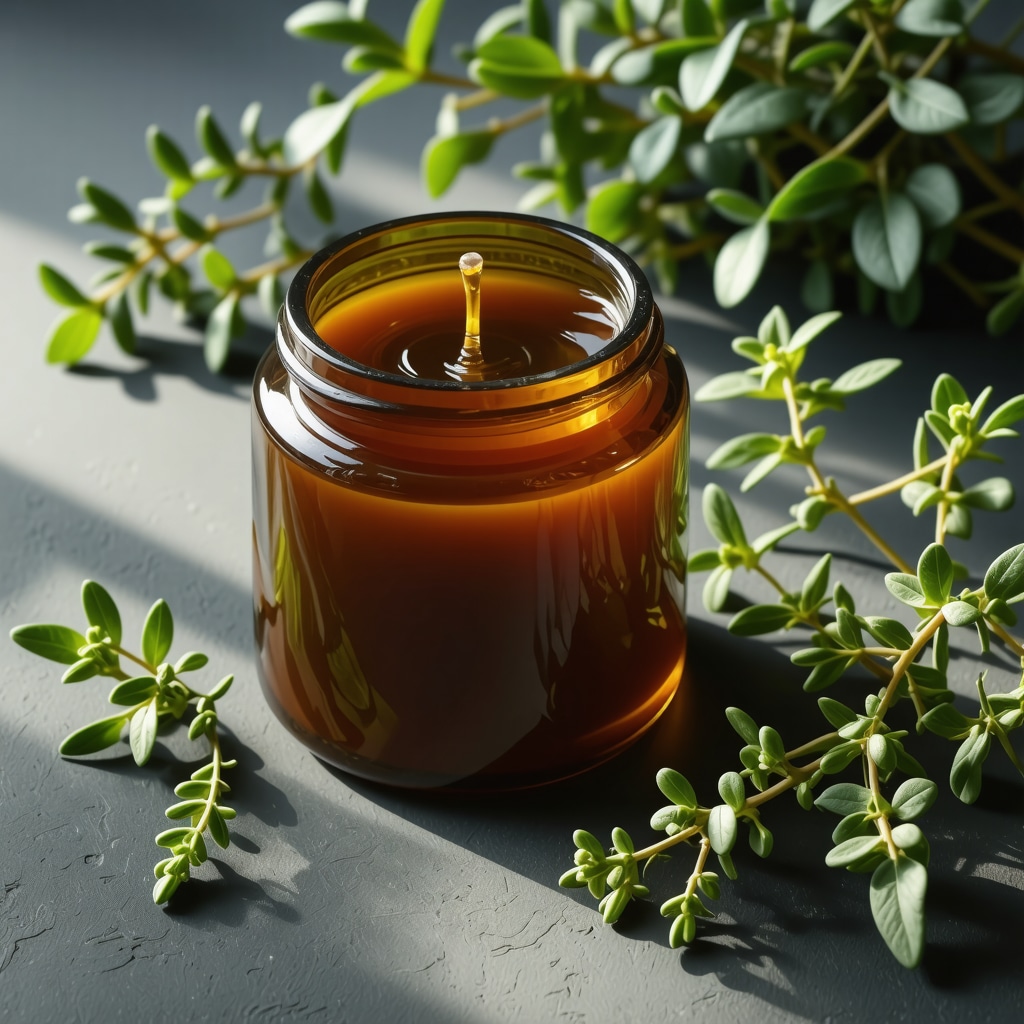Why Grass-Fed Tallow Might Just Be Your Skin’s New Best Friend
If you’ve ever wrestled with autoimmune skin issues, you know the frustration of finding skincare that soothes rather than stings. Enter grass-fed tallow — not your everyday beauty buzzword, but a centuries-old secret making a modern comeback. Unlike synthetic lotions overloaded with additives, grass-fed tallow offers a nourishing embrace that’s surprisingly close to our skin’s own lipid profile. Could this humble fat be the gentle hero your sensitive skin has been begging for?
Not All Fats Are Created Equal: The Grass-Fed Advantage
Before you recoil at the idea of applying animal fat on your skin, consider the source. Grass-fed tallow is derived from cows raised on natural pastures, resulting in a nutrient-dense fat rich in omega-3s, vitamins A, D, and K, and antioxidants. These components contribute to its anti-inflammatory properties, which are vital for calming autoimmune flare-ups. In fact, according to a study published by the National Institutes of Health, nutrient-rich topical agents can modulate skin inflammation effectively.
Is Grass-Fed Tallow Really the ‘Holy Grail’ for Autoimmune Skin?
That’s the million-dollar question. While no skincare product claims to be a cure-all, grass-fed tallow stands out for its compatibility with sensitive, compromised skin barriers. Its molecular structure closely mimics human sebum, which means it penetrates deeply without clogging pores or causing irritation. Plus, many users report improved hydration and reduced redness after consistent use. If you’re curious to explore this natural alternative, you might find inspiration in a detailed guide that unlocks the glow of grass-fed tallow in 2025 right here.
Walking the Tightrope: Trusting Natural Skincare in a World of Claims
What’s refreshing about grass-fed tallow creams is their simplicity and purity, often free from the seed oils and synthetic preservatives that can exacerbate autoimmune reactions. However, with any new skincare, patch testing is crucial. Transparency from brands about sourcing and processing matters too — after all, your skin is not just a canvas but a living organ demanding respect. For those wary of synthetic overload, there’s a compelling case for embracing zero-additive tallow products as a clean beauty choice worth considering.
Have you tried grass-fed tallow or any natural skincare for autoimmune skin conditions? Share your experiences or questions below — your story might be the missing link someone else needs.
Unlocking the Full Potential of Grass-Fed Tallow: Beyond Basic Moisturization
While grass-fed tallow is often celebrated for its moisturizing benefits, its true skincare prowess extends well beyond simple hydration. The presence of fat-soluble vitamins A, D, E, and K in grass-fed tallow not only nourishes the skin but actively supports cellular repair and regeneration. These vitamins enhance the skin’s resilience against environmental stressors, which is crucial for those with autoimmune conditions where the skin barrier is compromised. The natural antioxidants found in grass-fed tallow further combat oxidative damage, protecting skin cells from premature aging and inflammation.
Additionally, its fatty acid profile, rich in palmitic, oleic, and stearic acids, closely resembles the lipids naturally produced by human skin. This similarity facilitates deeper absorption and promotes skin barrier restoration, helping to reduce trans-epidermal water loss — a key factor in chronic dryness and irritation often experienced by sensitive skin types.
Formulating with Grass-Fed Tallow: What Should You Look For?
Not all tallow-based products are created equal. When selecting a grass-fed tallow cream, purity and minimal ingredient lists are paramount. Ideally, the product should be free from seed oils, synthetic fragrances, and harsh preservatives that can trigger sensitivities. Certified organic and grass-fed sourcing guarantees that the tallow retains its nutrient density without contamination from pesticides or antibiotics.
For those interested in DIY skincare, crafting your own whipped tallow cream with essential oils can be a rewarding way to tailor the benefits precisely to your skin’s needs. Incorporating anti-inflammatory essential oils like lavender or chamomile complements the natural healing properties of tallow, offering a synergistic effect for calming autoimmune flare-ups.
Could Grass-Fed Tallow Replace Conventional Moisturizers in Sensitive Skin Care?
This question invites a closer look at how grass-fed tallow compares with mainstream moisturizers, especially for individuals with sensitive or autoimmune skin. Unlike many commercial lotions laden with irritants and emulsifiers, tallow’s natural composition is inherently compatible with human skin, reducing the risk of irritation. Its occlusive yet breathable texture helps maintain optimal hydration levels without suffocating the skin.
According to a comprehensive review published by the National Institutes of Health, using lipid-rich natural products can significantly improve skin barrier function and decrease inflammation, highlighting tallow’s potential as a superior alternative for sensitive skin care regimens.
If you’re intrigued by these insights, exploring the nuances of how tallow stacks up against other moisturizers like shea butter can provide further clarity on choosing the best fit for your skin’s unique needs.
Expert Tips for Integrating Grass-Fed Tallow Into Your Daily Routine
To maximize the benefits of grass-fed tallow, consistency and proper application methods matter. Applying a thin layer on slightly damp skin helps lock in moisture more effectively. Nighttime use allows for longer absorption periods, supporting overnight skin repair. For those with specific concerns like eczema or psoriasis, layering tallow under a lightweight, fragrance-free barrier cream can enhance protection without irritation.
Furthermore, pairing grass-fed tallow with minimalistic skincare principles — avoiding unnecessary additives and harsh chemicals — aligns well with the clean beauty movement gaining momentum in 2024. This approach not only supports skin health but also encourages mindful consumption and sustainability.
Have you experimented with grass-fed tallow in your skincare routine? Share your experiences and favorite usage tips in the comments below or consider reading more about tallow skincare routines to unlock its full potential.

Decoding the Molecular Synergy: How Grass-Fed Tallow Enhances Skin Immunity
Delving deeper into the biochemistry of grass-fed tallow reveals a fascinating synergy between its constituents and the skin’s immune defenses. The fat-soluble vitamins, especially vitamins A and D, are not mere nutrients but pivotal modulators of cutaneous immunity. Vitamin A, for instance, plays a crucial role in keratinocyte differentiation and the maintenance of the epidermal barrier, while vitamin D regulates antimicrobial peptide expression, fortifying the skin’s frontline against pathogens and inflammation. This molecular dance is particularly beneficial for autoimmune skin conditions like lupus erythematosus or vitiligo, where immune dysregulation compromises barrier integrity.
Moreover, the natural antioxidants present in grass-fed tallow, including tocopherols and carotenoids, act as scavengers of reactive oxygen species (ROS). The oxidative stress from ROS exacerbates inflammation and tissue damage in autoimmune dermatological disorders. By neutralizing ROS, grass-fed tallow helps recalibrate the skin’s redox balance, supporting homeostasis and reducing chronic inflammatory signaling pathways.
Can Grass-Fed Tallow Modulate Autoimmune Skin Pathways at a Cellular Level?
Emerging research suggests that topical lipids like those in grass-fed tallow may influence cellular signaling cascades within epidermal and dermal layers. A peer-reviewed study from NIH highlights how lipid-based therapies can downregulate pro-inflammatory cytokines such as IL-1 and TNF-alpha, critical mediators in autoimmune flare-ups. While more targeted clinical trials are needed, this evidence underpins the rationale for integrating nutrient-dense, bioactive fats into therapeutic regimens for autoimmune skin diseases.
Innovative Applications: Beyond Topical Use of Grass-Fed Tallow in Dermatology
While topical application remains the primary mode, some integrative dermatologists are exploring oral supplementation with conjugated linoleic acid-rich tallow extracts for systemic anti-inflammatory effects. This approach taps into the gut-skin axis, recognizing that intestinal health profoundly impacts autoimmune skin manifestations. Additionally, advanced formulations combining grass-fed tallow with other botanicals—such as adaptogenic herbs or prebiotic ingredients—are under development to create multi-modal skincare solutions that address both the symptomatology and root causes of autoimmune skin conditions.
For practitioners and enthusiasts alike, understanding these evolving applications requires a nuanced appreciation of dermatological immunology and lipid biochemistry. Such knowledge empowers the customization of skin therapies that transcend conventional moisturization, offering restorative and immunomodulatory benefits tailored to patient-specific autoimmune profiles.
Expert Q&A: Integrating Grass-Fed Tallow into Complex Skincare Protocols
How Should Grass-Fed Tallow Be Combined with Prescription Treatments for Autoimmune Skin Disorders?
Integrating natural agents like grass-fed tallow into established treatment plans calls for careful coordination with dermatologists. Given its anti-inflammatory and barrier-repair properties, tallow can complement topical corticosteroids or calcineurin inhibitors, potentially enhancing efficacy while mitigating side effects such as skin thinning or irritation. However, timing and application sequence are critical—applying tallow after medicated creams ensures optimal absorption and interaction. Patients should always consult their healthcare provider to avoid contraindications, especially when using immunosuppressive agents.
This integrative approach underscores the potential for grass-fed tallow to serve not just as a standalone moisturizer, but as a strategic adjunct in managing complex autoimmune skin challenges.
Curious to elevate your skincare expertise with evidence-based natural therapies? Dive deeper into advanced formulations and clinical insights by exploring our comprehensive resources and expert-led webinars on grass-fed tallow’s role in autoimmune dermatology.
Harnessing the Immunomodulatory Power of Grass-Fed Tallow: A Deep Dive into Skin’s Molecular Harmony
Grass-fed tallow’s role transcends simple moisturization to become a dynamic agent in modulating skin immunity and inflammation. Its unique composition of bioactive lipids and fat-soluble vitamins orchestrates a molecular symphony that reinforces the skin’s natural defenses. Vitamins A and D, pivotal in regulating keratinocyte behavior and antimicrobial peptides, work synergistically within tallow to restore epidermal integrity compromised by autoimmune dysregulation. This fine-tuned interplay is crucial in managing chronic conditions such as psoriasis and atopic dermatitis, where barrier dysfunction perpetuates inflammatory cycles.
How Does Grass-Fed Tallow Influence Cytokine Profiles in Autoimmune Skin Disorders?
Emerging evidence suggests that topical lipids found in grass-fed tallow can modulate key inflammatory cytokines implicated in autoimmune dermatology. A notable study from the NIH highlights that lipid-based therapies can downregulate pro-inflammatory mediators like IL-1β and TNF-α, which are central drivers of autoimmune flare-ups. By attenuating these cytokines, tallow facilitates a reduction in inflammatory signaling pathways, promoting cellular homeostasis and reducing tissue damage. While clinical trials remain nascent, this mechanistic insight positions grass-fed tallow as a promising adjunct in comprehensive autoimmune skin care regimens.
Moreover, the antioxidant constituents in tallow, including tocopherols and carotenoids, scavenge reactive oxygen species (ROS), further mitigating oxidative stress that exacerbates autoimmune pathology. This dual action of immunomodulation and antioxidation underscores the sophisticated therapeutic potential of grass-fed tallow beyond conventional moisturizing agents.
Innovations in Dermatological Formulations: Integrating Grass-Fed Tallow with Modern Bioactives
Forward-thinking dermatologists and formulators are pioneering blends that marry grass-fed tallow with adaptogenic botanicals, prebiotic compounds, and targeted anti-inflammatory extracts. These hybrid formulations aim to leverage tallow’s lipid compatibility and nutrient density to deliver multi-dimensional skin benefits—addressing not only surface hydration but also microbiome balance and immune regulation.
For instance, combining tallow with botanical extracts like Centella asiatica or licorice root can enhance collagen synthesis and soothe inflammatory cascades, while prebiotic ingredients support a healthy skin microbiota, crucial in autoimmune contexts where dysbiosis often occurs. Such integrative products exemplify the cutting-edge of clean, efficacious skincare tailored for autoimmune sensitivities.
What Are the Best Practices for Combining Grass-Fed Tallow with Conventional Autoimmune Treatments?
Collaborative care involving dermatologists is paramount when incorporating grass-fed tallow alongside prescription therapies such as corticosteroids or calcineurin inhibitors. The timing of application is critical—applying tallow after medicated creams can enhance barrier repair without impeding absorption of active pharmaceuticals. This synergy may reduce reliance on higher doses of immunosuppressive drugs, potentially minimizing side effects like skin atrophy and irritation.
Patients should engage in open dialogue with healthcare providers to tailor individualized regimens. Such integrative approaches harness the natural reparative strengths of tallow while respecting the potency of conventional medicine.
Join the Conversation: Share Your Grass-Fed Tallow Experiences and Discover More
Are you navigating autoimmune skin challenges and curious about integrating grass-fed tallow into your routine? We invite you to share your insights, questions, or success stories below. Your contributions could illuminate new pathways for others seeking gentle yet effective skin solutions.
For those eager to deepen their understanding of grass-fed tallow’s transformative potential, explore our detailed resources on unlocking your skin’s natural glow in 2025 and discover expert-curated tips for optimizing your skincare journey.

Expert Insights & Advanced Considerations
The Molecular Harmony of Grass-Fed Tallow Enhances Skin Immunity
Grass-fed tallow’s unique composition of bioactive lipids and fat-soluble vitamins such as A and D plays a pivotal role in regulating keratinocyte differentiation and antimicrobial peptide expression. This molecular synergy reinforces the epidermal barrier and modulates cutaneous immunity, particularly benefiting autoimmune skin conditions characterized by barrier dysfunction and chronic inflammation.
Immunomodulatory Effects Extend Beyond Moisturization
Emerging research reveals that the lipid profile of grass-fed tallow can downregulate pro-inflammatory cytokines like IL-1β and TNF-α, key drivers in autoimmune flare-ups. Coupled with antioxidants such as tocopherols and carotenoids, tallow actively reduces oxidative stress and inflammatory signaling, positioning it as a promising adjunct in complex dermatological regimens.
Integrative Formulation Strategies Amplify Therapeutic Potential
Combining grass-fed tallow with botanicals like Centella asiatica and licorice root or prebiotic compounds can create multi-modal skincare solutions that not only restore barrier function but also support microbiome balance and immune regulation. This integrative approach aligns with clean beauty trends and offers tailored benefits for sensitive, autoimmune-prone skin.
Synergistic Use with Prescription Treatments Requires Clinical Coordination
Optimal integration of grass-fed tallow with topical corticosteroids or calcineurin inhibitors demands precise timing—applying tallow after medicated creams enhances barrier repair without compromising drug absorption. This synergy may reduce reliance on higher doses of immunosuppressants and mitigate side effects, underscoring the importance of professional guidance in treatment planning.
Consistency and Minimalism Are Key to Unlocking Benefits
For maximum efficacy, applying grass-fed tallow on slightly damp skin and adhering to a minimalist routine free from irritants enhances hydration and skin barrier restoration. Nighttime application supports prolonged absorption and repair, making it a strategic choice for those managing autoimmune dermatological challenges.
Curated Expert Resources
National Institutes of Health (NIH) Dermatology Publications: Authoritative peer-reviewed studies providing insights into lipid-based therapies and inflammatory cytokine modulation in autoimmune skin conditions. Explore key research here.
“Grass-Fed Tallow Skincare: Unlocking Natural Glow in 2025”: A comprehensive guide detailing nutrient profiles, application protocols, and emerging trends in tallow skincare. Access the guide.
“Tallow vs Shea Butter: Which Moisturizer Wins for Sensitive Skin?”: An analytical comparison that helps professionals and consumers choose optimal moisturizers for compromised skin barriers. Read the article.
Integrative Dermatology Webinars and Workshops: Specialized sessions discussing the integration of natural lipid therapies with conventional treatments, often featuring expert clinicians and formulators. Check professional dermatology networks and continuing education platforms.
DIY Whipped Tallow Cream Recipes with Essential Oils: Practical resources for creating personalized, additive-free skincare products tailored to autoimmune skin needs. Discover recipes.
Final Expert Perspective
Grass-fed tallow emerges as a scientifically intriguing and clinically promising agent in the realm of autoimmune skin care. Its molecular compatibility with human skin lipids, coupled with immunomodulatory and antioxidant capacities, distinguishes it from conventional moisturizers. When integrated thoughtfully—respecting timing with prescription treatments and emphasizing purity and consistency—grass-fed tallow can elevate skin barrier health and modulate inflammatory pathways. This nuanced understanding invites both clinicians and skincare enthusiasts to reconsider natural fats not merely as moisturizers but as dynamic components in comprehensive autoimmune dermatology.
We encourage you to deepen your exploration of grass-fed tallow’s transformative potential by engaging with expert resources and sharing your professional insights or experiences. For further guidance and community dialogue, visit our detailed resource on unlocking your skin’s natural glow in 2025 and connect with like-minded experts through our contact page.


I found this post really enlightening, especially regarding how closely grass-fed tallow mimics our skin’s own lipids. Having sensitive, autoimmune-prone skin myself, I’ve experimented with natural oils, but I’ve never considered tallow in my routine. The detailed breakdown of how it supports cellular repair through vitamins A and D resonates with my experience of improved hydration when I switched to more nutrient-dense products. I appreciate the emphasis on sourcing and purity, which is so vital for sensitive skin. Has anyone tried DIY tallow creams with essential oils like chamomile or lavender? I’m curious about how those might further calm flare-ups and enhance skin resilience long-term. It seems like a simple yet powerful way to support the skin’s barrier without introducing irritants common in many commercial products. I’d love to hear from others who’ve incorporated tallow into their routine—what results have you seen, and what application strategies do you recommend for autoimmune conditions?